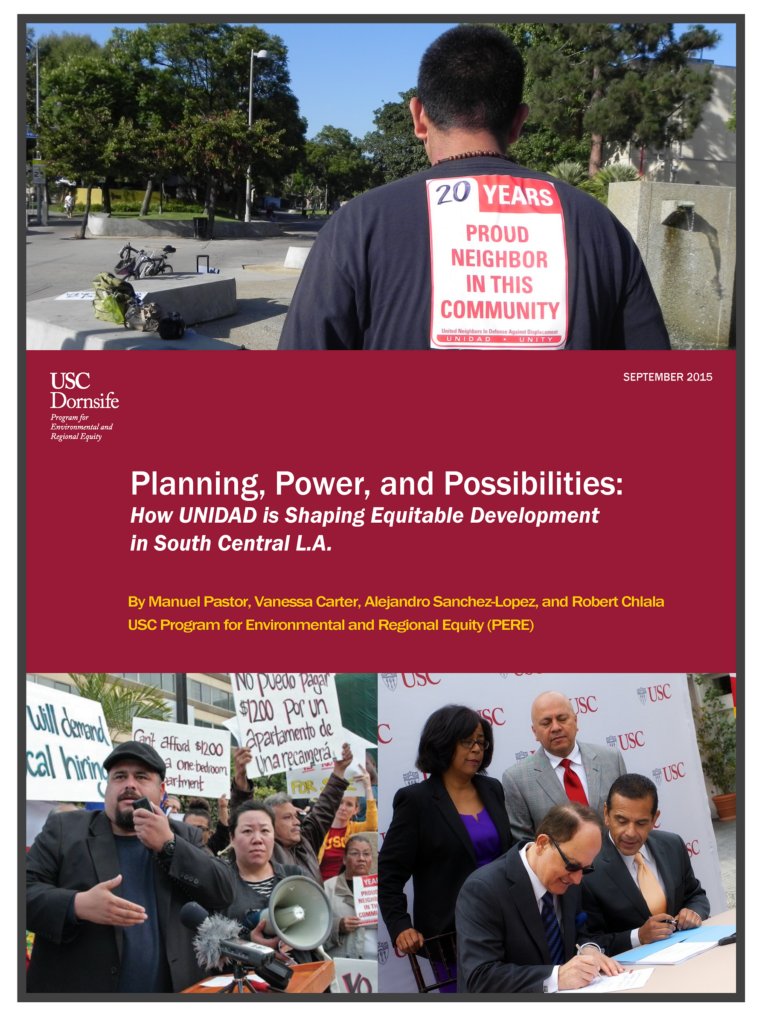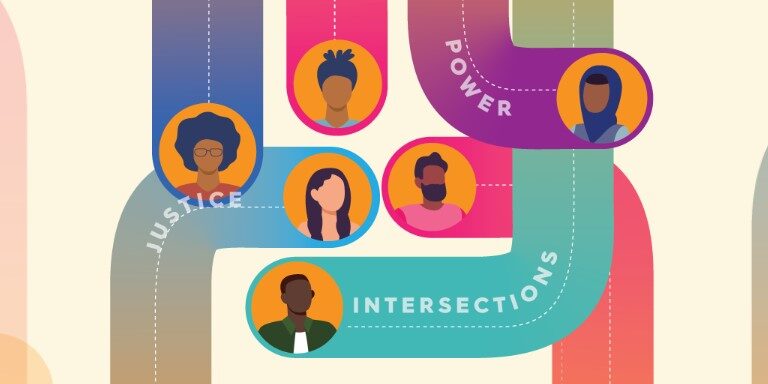
September 16, 2015
By Manuel Pastor, Vanessa Carter, Alejandro Sanchez-Lopez, and Robert Chlala
Please note: reports dated earlier than June 2020 were published under our previous names: the USC Program for Environmental and Regional Equity (PERE) or the USC Center for the Study of Immigrant Integration (CSII).
Planning, Power, and Possibilities tells the story behind two community benefits negotiations forged by the United Neighbors in Defense Against Displacement (UNIDAD) coalition in South Central Los Angeles.
Private redevelopment is in full tilt in downtown Los Angeles—and cities across the nation—but with what is often welcome progress also comes unequal gains and potential problems of displacement. In two community organizing victories, UNIDAD has proven that community organizations and private developers can forge a shared future, using tools like community benefits agreements (legal agreements on new real estate development projects).
In two agreements—one with developer G.H. Palmer Associates in 2011 and a second with the University of Southern California (USC) in 2012—UNIDAD negotiated for concrete community benefits including a new health clinic, living wage jobs, and $20 million for affordable housing, among other things.
In this report, we put those particular agreements in a broader context, showing how histories matter, movements matter, and models matter for achieving mutually beneficial wins and building inclusive, diverse, and vibrant cities.
The project was made possible through funding from The California Endowment and the James Irvine Foundation and the time and insight of the UNIDAD coalition, the University of Southern California, the City of Los Angeles, and G.H. Palmer Associates.
Download report
“Planning, Power, and Possibilities”
- Histories Matter: UNIDAD was successful because they had been in South Central for the past two decades, building relationships with residents and USC
- Movements Matter: UNIDAD was able to secure community benefits from real estate developments because they used a social-movement approach
- Models Matter: Social-movement organizations, like UNIDAD, can shape equitable development in metros across the nation



